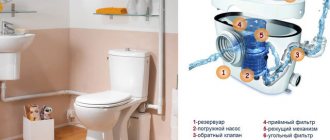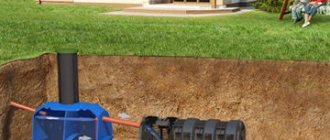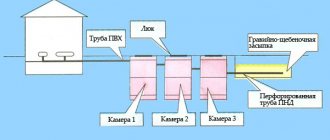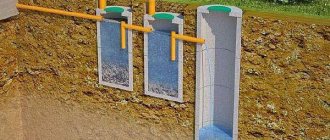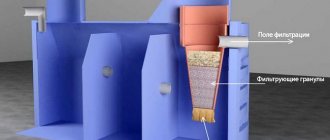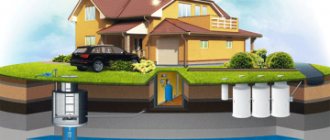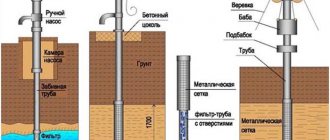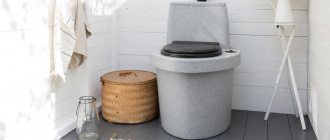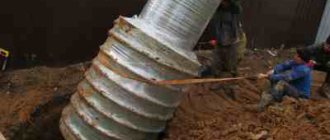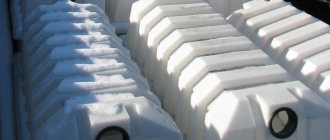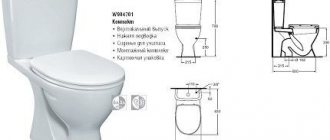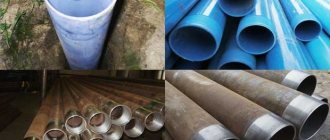When creating an autonomous sewage system in a country house or on a summer cottage, it is impossible to do without wastewater collection or treatment devices. For these purposes, you can use a cesspool, a septic tank system or a septic tank.
It is the latter option that can honestly be called a real cleaning system. It is in such devices that all pollutants and biological residues are removed from the wastewater. The output from the septic tank is water with a degree of purification from 85 to 98 percent. And bioseptics can boast the highest indicator. These devices use colonies of microorganisms in their work. It is such devices that will be discussed in this article.
What is a bioseptic?
You can find many models of bioseptic tanks on sale. They differ both in their design and in their operating efficiency. But in general terms, such devices have a similar structure. The bioseptic tank itself is made in a single body, where there are several compartments connected to each other by pipes or airlifts.
The first compartment acts as a sump. This is where all the sewage goes. Solid particles settle to the bottom, and light fractions flow into the next container. There can be several compartments in a bioseptic tank. In some, biological wastewater treatment occurs, others act as secondary settling tanks.
The main difference between bioseptic tanks and conventional septic tanks is the use of colonies of microorganisms. Bacteria can be either anaerobic or aerobic. The first ones work without air access, others only with the supply of fresh oxygen using compressors. But in any case, during their life activity, both species perfectly break down biological residues and bring the degree of wastewater purification to 95-98%.
Modifications of the Zorde biological treatment station
There are six of them, and they differ in two ways:
- Number of conditional users.
- Depth of inlet pipe.
Number of conditional users
In this regard, Zorde is not very diverse. It has only two models - Zorde 4 and Zorde 7. The Zorde 4 septic tank can be used by 2 to 5 residents. Zorde 7 accepts inputs from a maximum of 8 users. Only permanent residents are counted. Thanks to the large volume of the reception chamber, Zorde is not afraid of an influx of guests. Especially considering that the amount of plumbing in the house is unchanged.
Depth of pipe entry into the septic tank
Based on this feature, Zorde bioreactors are divided into standard, midi and long. Zorde midi and long stations are purchased if the waste pipe from the house is buried below 550 mm from the ground surface. The distance is calculated from the zero mark of the section to the bottom tray of the pipeline. The choice of septic tank is also influenced by the distance of the installation site from the house. Since the supply pipe is laid at a slope of 2 cm by 1 m, the further the septic tank is, the lower the inlet pipe will be.
Fig.1. Approximate installation diagram of a biorefinery station
Clean water drainage method
Most biological treatment stations also differ in the methods of removing clean water - there are gravity stations (the water comes out by gravity through a drain pipe) and forced stations (the water is removed by a pump). Zorde does not have such a division, since these are universal septic tanks. They all have a branch pipe for the outlet pipe drilled in at the factory and a shelf for the pump as part of the standard station kit.
If you want to organize a forced withdrawal (this is necessary in most cases), then you will only have to purchase a pump and a forced withdrawal kit (pipe and pipe).
The versatility of the Zorde is very convenient; there is no need to convert it from a gravity station to a forced one; you can simply buy an additional pump. supplies its pumps along with Zorde for 3,500 rubles.
Types of bioseptics
Biological sewage treatment systems (bioseptics) differ in many respects. For example, manufacturers produce devices made from various materials. On sale you can find bioseptic tanks made of plastic, metal, concrete and reinforced concrete.
But the main difference is the use of different main components of the cleaning system. According to this principle, bioseptics are divided into:
- devices with biofilters;
- bacterial septic tanks.
In the first case, a biofilter is placed in the device. This is a compact design with a large internal surface. Using a biofilter, wastewater undergoes additional mechanical filtration and is simultaneously purified using colonies of microorganisms.
Depending on the bacteria used in bioseptics, biofilters are divided into:
- anaerobic - are a sealed container where microorganisms live without access to air;
- aerobic - bacteria are used here that require a constant supply of oxygen. Therefore, such biofilters are equipped with compressors that supply air from the atmosphere.
Bacterial septic tanks do not have special devices for “living” colonies of microorganisms. Bacteria multiply and conduct their life activities directly in the bioseptic tank. Such devices can also operate on both anaerobic and aerobic principles. In the second case, the septic tank is equipped with a compressor.
Outdated classics
The purpose of a septic tank is to filter wastewater. This is a container divided into several chambers. In each part, a certain type of purification occurs: filtration, fermentation, settling.
The quality of the purified water in the last cycle determines the method of its removal from the storage tank. Pumping out of primitive structures is carried out using a sewer truck, or it can be additional treatment through the soil layer.
In the first chamber of the septic tank, solid fractions are separated from the water. In the other, the transformation of coarse sediment into a silty consistency with the help of anaerobic bacteria. As sludge accumulates, it must be pumped out by machine, and the pre-purified water is discharged for post-treatment.
This is the general principle of operation of septic tanks, regardless of design features. The differences between a septic tank and a bioseptic tank lie in the methods of mechanical, chemical and biological components of cleaning.
Advantages of conventional septic tanks
Any simple septic tank performs its function properly, provided that waste is disposed of in a timely manner.
This option has been an excellent solution for summer cottages, country and village houses for decades due to:
- simple design of structures
- low cost of septic tank and installation
- no need to use a large area.
All these factors determine the minimum requirements for using the cleaning system, and, consequently, the comfort of life during living and economic activity.
The negative side of simple septic tanks
The most troublesome thing when using a wastewater treatment system is the expenditure of time and money on sanitation operations. Often the problem is the lack of space in the area that needs to be allocated for the filtration field. Fine cleaning requires soil, which cannot be used for growing crops.
During sewage disposal, bacteria are also removed along with sediments. Therefore, it is necessary to periodically introduce a new bacterial composition into the storage tank of a conventional septic tank.
Pros and cons of devices
Bioseptics, like any other similar device, have their positive and negative sides. The advantages of the device include the following:
- environmental friendliness. Bioseptics are capable of purifying sewage up to 98%. This allows you to discharge purified water directly into the ground or natural reservoir without harming the environment;
- ease of installation and operation. Septic tanks are factory-made and equipped with all necessary equipment. Therefore, their installation and further use will not cause any difficulties for anyone;
- long service life. Thanks to the use of modern materials and technologies, the service life of a bioseptic tank reaches 50 years;
- compactness. Due to the use of colonies of microorganisms, large volumes are not necessary;
- since the device is made in a single sealed and durable housing, the bioseptic tank can be installed in any type of soil;
- purified water can be used to water plants. In addition, the sludge formed as a result of the operation of a septic tank is an excellent fertilizer.
If we talk about the disadvantages of bioseptics, there are much fewer of them. We list only the main ones:
- high price. But this minus is compensated by a long service life and the absence of the need for frequent pumping of accumulated sewage;
- it is necessary to periodically add biological products containing colonies of microorganisms to the bioseptic tank;
- Long downtime should not be allowed. This leads to the death of bacteria, and therefore to additional costs for the restoration of colonies of microorganisms (purchase of biological products);
- Also, the death of bacteria can result from the discharge of chlorine-containing substances into the sewer system.
“Handmade” septic tanks or factory-assembled devices?
Many people believe that installing a local sewage system requires large financial investments, but there is a way out of this situation - making a septic tank with your own hands. In this case, you must have certain construction skills, be able to make correct calculations, taking into account sanitary standards, taking into account the danger that wastewater poses to the environment. It is better to entrust the work to professionals, although the ideal solution to the issue is to purchase a ready-made treatment plant - durable and reliable.
Among the manufacturers of septic tanks whose products are very popular are the Topas (Topas-S, Topaero), Unilos Astra, Eurolos, Termit, Tver, Diamant, Ergobox, Dochista, Terra, Biozon and Kolovesi models. They are engaged in their sale, assembly and installation in Moscow and the Moscow region. We have 10 years of experience and carry out a full range of services. All equipment we offer is certified, and quality is confirmed by a three-year warranty on all products. Our prices are fully consistent with the quality, we have interesting offers for partners and discounts for regular customers.
Electrical equipment of the Zorde biorefinery station
A 40 W compressor is responsible for the operation of the station. Usually this is a Secoh or Hiblow, but can be any other compressor. The timer controls the operation of the compressor. By default, the timer is configured as follows: the compressor runs for half an hour, and rests for half an hour. But it can be configured differently. When the compressor does not work, aeration does not occur; wastewater settles in the station.
Warranty for electrical equipment – 1 year.
Since all overflows in the station are gravity-fed, the Zorde bioseptic tank can operate without electricity for 6-8 hours. At the same time, the quality of wastewater treatment will not decrease. However, this only works if:
1. The removal of clean water occurs by gravity (without electricity, the pump does not work).
2. At your dacha, the water supply also does not depend on electricity or there is a large supply of water in the system.
Otherwise, turning off the light will paralyze the work of water supply and sewerage in a private house.
Benefits of working with bacteria
This is what it looks like
The use of bacteria greatly simplifies the care of the septic tank. So, if the drainage in it suddenly turns out to be silted or clogged, it is often enough to simply add bacteria to the septic tank. They will remove the blockage themselves.
Even if you don’t have a septic tank, but a simple cesspool that is already filling up and emitting unpleasant odors, it can also be turned into a bio cesspool. To do this, it is enough to add there the same bacteria intended for this purpose. And soon the recycling process will begin, which will remove the smell and turn the waste into compost.
You can either clean the hole without any complications, or fill it up without any unpleasant moments. Useful fertilizer will remain inside.
Important! Bacteria cannot cope with large volumes of fat - at least not the typical types that are offered for septic tanks as part of conventional mixtures. In order to combat such problems, you need to install grease traps - this will keep the bacteria alive. Alkali and chlorine also kill biological cultures - no need to send this to a septic tank with bacteria.
Installation instructions
The installation of the pipe begins from the side of the septic tank, and not from the house.
The pit for the tank must be deep enough to prevent the contents from freezing.
A particularly vulnerable spot is the pipe, which can be additionally insulated with glass wool and other insulation.
To ensure that the water drains without delay and the pipe does not become clogged with sediment, it is necessary to create a slight slope. We should not forget about the removal of methane through ventilation.
The ventilation pipe can be mounted directly on the septic tank or on a pipe leading to it.
